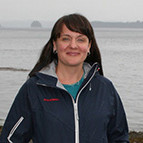A couple of weeks ago, I attended a Northeast Fishery Science Center outreach meeting at the Gulf of Maine Research Institute in Portland. The stated agenda was to get feedback from stakeholders about the assessment process for Northeast groundfish.
We were told in no uncertain terms during that meeting that the current assessment would not allow data gathered via cooperative research because it was considered a new data set. The lone exception, however, would be new data gathered via recreational collaborative research showing survivability rates of rec discards in Gulf of Maine cod because it includes “high-quality information.”
The presumption being, I suppose, that collaborative research conducted by federal researchers working with commercial fishermen is not of high enough quality to be permitted in the assessment of a federally managed fish.
Frankly, something stinks, and it’s not the cod.
As meeting attendee Maggie Raymond, director of the Associated Fisheries of Maine, pointed out, “Anything that could possibly result in a higher quota could not be included” in the stock assessment.
Last week, in yet another blow to the fleet struggling to survive a 75 percent quota cut, NMFS denied the council’s emergency request to suspend the fishermen-funded, fed-required observer program. Why? Perhaps because they have bought into the notion that the only way to properly assess the fish stocks is to count what gets caught.
Anyone who has ever been fishing will tell you that what you catch often has little to do with how many fish are in the water but is often a result of where you’re fishing, how your gear is set, and what the conditions are both above and below the waterline.
This is why fishermen look askance at assessments based on one or two tows on one day, set by researchers who may or may not understand the gear in an attempt to account for 20 species of commercial fish.
This is the kind of “high-quality data set” researchers are using to manage our fisheries.
But let’s assume the observers are not there to contribute to assessment research and only to account for bycatch. If you want to count bycatch, you’d be better off creating incentives for fishermen to land bycatch, count it at the dock and then donate it to food banks and schools (everyone in the community wins here). Then spend some money analyzing where and why it was caught and then adjust gear, fishing zones and fishing times to reduce the amount of bycatch. Or better yet, incentivize fishermen to communicate at sea (which many of them already do in order to avoid catching the choke species that can end your fishing year with one bad set) in order to avoid bycatch.
It seems that at many opportunities, we are throwing practical approaches out the window. And we are hurting much more than just the fishing families as a result. We are strangling shoreside processors, gear suppliers, retail businesses, and yes, the appeal of the New England working waterfront, which many tourists spend thousands of dollars to experience every summer.







